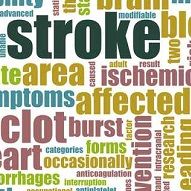Article
Stroke Rehab Should Stress Turning, Study Says
Author(s):
The ability to turn when walking can be lost or compromised after a stroke. French researchers found that turning skills should be a focus of rehabilitation with a goal of preventing falls.

Rehabilitation programs for stroke patients should be more focused on turning, and leading up to turning to better prevent falls, according to the results of a recent study. The study was published in PLOS ONE on February 19, 2016, and was conducted by Celine Bonnyaud of the Hospital Raymond Poincare in Garches, France, and colleagues.
Clinicians use the Timed Up and Go (TUG) test to predict the risk of falls and to assess the patient’s ability to walk following a stroke, particularly locomotor trajectories.
The researchers say they had four specific aims in conducting this study: “i) to analyze locomotor trajectories in patients with stroke during the walking and turning sub-tasks of the TUG, and to compare them with healthy subjects, ii) to determine whether trajectory parameters provide additional information to that provided by the conventional measure (performance time), iii) to compare the trajectory parameters of fallers and non-fallers with stroke and of patients with right and left hemisphere stroke, and iv) to evaluate correlations between trajectory parameters and Berg Balance Scale scores.”
In order to complete the study, 29 patients with stroke, and 25 healthy controls were recruited. The stroke patients were drawn from the department of physical medicine and rehabilitation in the Hospital Raymond Poincare. Each participant completed 3 TUG tests. Three sub-tasks were evaluated: Go, Turn, and Return.
The researchers compared the trajectory parameters of the stroke patients and the healthy subjects and reported finding that the stroke patients “deviated from the reference trajectory both at an isolated point and during the entire sub-task.” Analyzing locomotor trajectories provides complementary information to the more conventional method of analyzing the gait of stroke patients, timed performance of specific locomotor tasks. The researchers said, “Longer and more deviated trajectories were significantly related to poor balance during the turn sub-task,” and that “the trajectories of the faller group were significantly more deviated than those of the non-faller group during the oriented-gait to the cone.”
Evaluating the locomotor trajectories of stroke patients “complements time performance since it objectively quantifies locomotor trajectory and provides additional information regarding gait alterations in the presence of an obstacle,” concluded the researchers. They suggest that this type of assessment could help clinicians evaluate fall risk.




